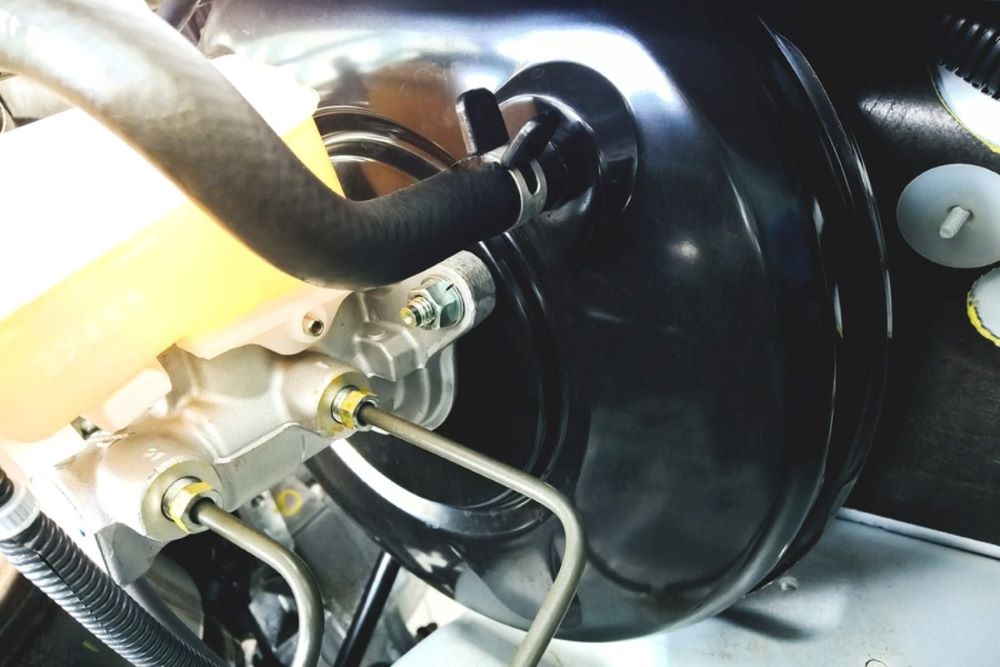Checking vacuum leaks from the power booster
When it is determined that the engine provides the necessary vacuum for the operation of the power booster and the brake pedal is still hard, ie the driver must apply a higher force of foot pressure when braking, the vacuum leak from the power booster is checked. Vacuum leaks can affect the formation of the fuel/air mixture and the operation of the engine. The vacuum leak on the power booster can be external or internal.
First, check for external vacuum leaks. The engine is started and left to run for at least 10 seconds. The engine shuts off without depressing the brake pedal. After 10 minutes, depress the brake pedal (moderately firm pressure), paying attention to the free play and reserve travel. Then, with the same force, press the brake pedal a few more times. Each new pressure releases a vacuum from the power booster, which results in a firmer brake pedal. This behavior of the brake pedal is a sign that there is no external vacuum leak. If the pedal behaves differently then you need to check the power booster to the external vacuum leaks.
The places where external vacuum leakage can occur are rubber plug or valve for measuring the vacuum on the power booster, front or rear seals, the atmospheric valve on the back of the power booster, on the joints of the two halves of the power booster housing, or holes on the housing itself.
Checking for internal vacuum leaks begins by starting the engine and let it run at idle. Then depress the brake pedal with firm pressure. Without moving the foot from the pedal, the engine is turned off and the behavior of the brake pedal is observed for about 1 minute. If the position of the pedal remains stable, there is no internal leakage. However, if the pedal is raised there is an internal leak in the diaphragm, control valve, or non-return valve.
To checking vacuum leaks from the power booster, follow these steps:






